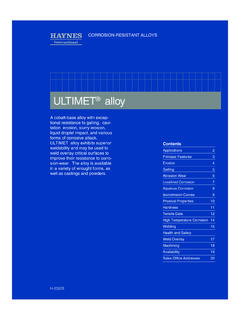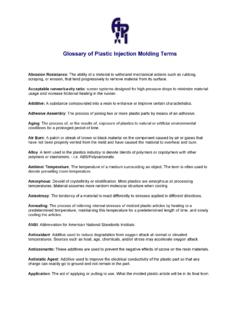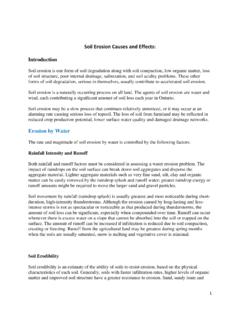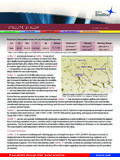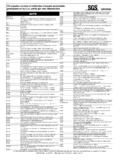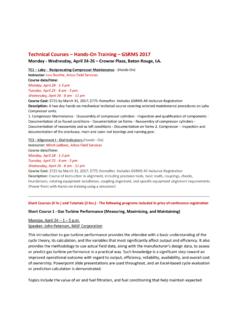Transcription of Particle Impact Erosion and Abrasion Wear – …
1 Particle Impact Erosion and Abrasion Wear predictive methods and remedial Measures Report No. COAL R241 DTI/Pub URN 04/701 March 2004 by D J Foster, W R Livingston, J Wells, J Williamson, W H Gibb & D Bailey Mitsui Babcock Energy Limited, Porterfield Road, Renfrew, PA4 8DJ Tel: 0141 885 3873 The work described in this report was carried out under contract as part of the DTI Cleaner Coal Research and DevelopmentProgramme. The programme is managed by Mott MacDonald Ltd. The views and judgements expressed in this report are those of the contractor and do not necessarily reflect those of the DTI or Mott MacDonald Ltd First published 2004 Mitsui Babcock copyright 2004 iii iv EXECUTIVE SUMMARY Objectives The overall objectives of the project can be listed as follows.
2 To select a suite of test coals that is representative of the range of ash contents and ash qualities normally encountered in steam coals worldwide, and to subject these coals to a programme of basic characterisation work using both conventional laboratory techniques and Computer Controlled Scanning Electron Microscopic (CCSEM) techniques. To measure the rate of abrasive wear of coal mill grinding elements associated with the milling of these coals, using the Mini-mill Test Facility operated by Mitsui Babcock in Renfrew. To measure the rate of erosive wear associated with the Impact of pulverised coal particles made from these coals on a carbon steel target, under controlled conditions, using the Erosion Test Rig operated by Mitsui Babcock in Renfrew.
3 To measure the relative Erosion resistance of a range of target materials, including a number of specialist coatings. To develop correlations between the Abrasion and Erosion characteristics of the test coals and the ash characteristics of the coals, measured using CCSEM techniques. Summary This project involved a detailed investigation of the Abrasion and Erosion characteristics of a suite of pulverised coals, selected to represent the full range of coal quality encountered by boiler plant designers and operators worldwide, and of the relative Erosion resistance of a range of materials. The principal objective of the Abrasion and Erosion work was to develop improved correlations between the Abrasion and Erosion behaviour of the coals and their basic characteristics, as measured using CCSEM techniques.
4 The CCSEM techniques are relatively novel, and generate quantitative information about the chemical and microstructural characteristics of the pulverised coals, which is not available by any other technique. The Abrasion and Erosion testwork and the CCSEM characterisation of the test coals have been very successful, and very good correlations have been developed between the measured Abrasion and Erosion rates and the volume percent of hard mineral particles above a certain size in the pulverised coals. These correlations are suitable for predictive purposes, and the work has resulted in the development of laboratory procedures suitable for the assessment of the Abrasion and Erosion behaviour of unfamiliar coals.
5 This represents a very significant step forward in our understanding of the Abrasion and Erosion behaviour of coal particles . May 2003 Page 1 of 43 Mitsui Babcock 2003 The project also involved the measurement of the relative Erosion resistance of a range of materials and coatings, relevant to the materials of construction of the components of coal milling and combustion equipment and of boiler plant. May 2003 Page 2 of 43 Mitsui Babcock 2003 Cost The cost of the project was 240,000, of which 120,000 was provided by the Department of Trade and Industry and 120,000 by the project partners. Duration 24 months December 2000 to December 2002 Research Institutions and Project Partners Mitsui Babcock Energy Limited Porterfield Road Renfrew PA4 8DJ Tel: 0141 885 3873 Department of Materials ICSTM Prince Consort Road South Kensington London SW7 2BP Tel: 0207 594 6747 Power Technology Powergen UK plc Power Technology Centre Ratcliffe-on-Soar Nottingham NG11 0EE Tel: 0115 936 2000 Plasma and Thermal Coatings Maesglas Industrial Estate Newport South Wales NP20 2NN Tel.
6 01633 245 600 Principal Investigators Dr D J Foster (MBEL) Prof J Williamson (ICSTM) Dr W H Gibb (Powertech) David Bailey (P&TC) May 2003 Page 3 of 43 Mitsui Babcock 2003 Background Erosive and abrasive wear of the components of the fuel handling and firing systems, and of the boiler, are major issues for the designers and operators of coal-fired power plants (Raask 1988, EPRI 1985). The wear mechanism in both cases is almost entirely due to the presence of hard mineral matter in coals, and principally quartz and pyrite, these materials being harder than steels. The carbonaceous matter and clay minerals are relatively soft and cause little erosive or abrasive wear.
7 Abrasive wear is caused by the sliding of hard particles over a surface, or between two surfaces. In power plants, the main areas of concern are in coal handling, crushing and milling equipment, where abrasive wear of metal components in contact with the mineral constituents of the coal can affect the performance of the equipment, and can be a significant contributor to the maintenance costs. Erosive wear is associated with the Impact of hard particles , carried in a fluid at significant Impact velocities, on metallic and other surfaces. The key areas of concern in coal-fired power plant are the internal surfaces of coal mills, the pulverised coal pipework, and the burner internals, where erosive wear due to the Impact of pulverised coal particles can have an effect on the performance of items of equipment, and can increase plant maintenance costs.
8 Erosive wear of boiler tubes and other surfaces in the convective section, either by ash Impact Erosion or due to the action of the sootblowers, is also of concern. Knowledge of expected Abrasion and Erosion wear rates for particular coals is necessary to allow equipment suppliers to design for the intended fuel and provide guarantees of equipment lifetimes, and to allow operators to plan maintenance schedules. This is particularly important in the case of power plants that utilise high ash coals, where the costs of abrasive and erosive wear can be very significant. Experimental work The experimental approach adopted for this project involved the use of two small-scale test facilities, viz: The Mini-mill Test Facility, which is operated by Mitsui Babcock in Renfrew, is a small-scale coal mill, which operates at a raw coal throughput of 5 kg h-1, and which permits direct measurement of the weight losses of the coal grinding elements due to abrasive wear.
9 The Mini-mill product was then employed as the feed material for the Erosion Rig experiments, and to provide samples of pulverised coal for the CCSEM work. The Erosion Rig, which is also operated by Mitsui Babcock in Renfrew, is a small-scale test facility, in which particles of the erodent material, entrained in a stream of air at a controlled velocity, can be directed at a small target coupon under controlled conditions. The weight loss of the target coupon due to erosive wear is measured, and the results are normally expressed in terms of the weight loss in milligrams per kg of erodent material. The CCSEM characterisation, carried out at Imperial College, was performed on both the raw coal samples, and on samples of the pulverised coal product material from the Mini-mill tests.
10 For the quantitative work, small samples of the pulverised May 2003 Page 4 of 43 Mitsui Babcock 2003 coals were taken, and these were mixed with an iodoform-doped epoxy resin, in such a way as to provide an even distribution of the pulverised coal particles through the resin matrix. The iodoform doping technique is used to provide contrast between the resin and the carbonaceous matter in the coal, when viewed using back-scattered electron imaging in the SEM and to allow the resin matrix to be differentiated chemically from the coal substance. After setting, the mounted specimens were ground and polished to a m finish to provide a random plane cut through the suspended particles .
